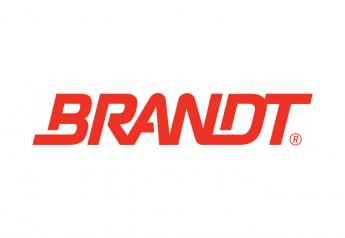Here’s Why the Current Bull Market Has a Two-Year Runway
USFR-RT2 2.28.21
Corn, soybeans and wheat experienced double-digit price gains on Tuesday, a product of the 2021 bull market. And as prices continue to see the extreme price moves, its’ a matter of how long can the bull market last?
“That's the million-dollar question, and it's a fair question,” says Mark Schweitzer, vice president of global economic research for ADM. “If you're sitting there and you're looking at your operation, I'd be asking the same thing.”
Schweitzer says there are several catalysts creating the bull market in ag commodities this year, including improved demand and declining supplies – a scenario that he sees continuing for a couple years.
“There's no question that we have a multiyear rebalance,” says Schweitzer. “That's got to happen in the global balance sheet.”
Schweitzer thinks as the rebalancing occurs, U.S. producers have the opportunity to reap the benefits of higher prices not just through 2021, but into 2022.
“2021 looks to be like we're going to be in the rebalance, we should enjoy higher prices, tighter inventories and as we go into 2022, looks like the U.S. producer will also get a crack at another round of fence row to fence row rotation.”
Is the Demand Real?
Part of the higher price equation is the possibility of record demand, a large portion of that coming from China. So, is the demand real? Schweitzer says commodity prices in China provide the best answer.
“When we work with our Chinese team and local prices in China right now, for feed corn, at the miller level, the price is around $445 a ton,” he explains. “On an equivalent basis, that's over $10 a bushel. When you think about $5.50 on the board, and you take $1 basis and add in some logistics to get to there, certainly U.S. corn is competitive into the Chinese market.”
He says looking at feed, corn is also trading higher than wheat in China, a sign the demand is there.
“There's no question the demand is real,” he says. “The Chinese balance sheets are tighter than what the USDA shows and the new FAO numbers. So, it feels that the rebalance is here. And it feels like we've got at least a year and a half to a two-year kind of a cycle.”
Naomi Blohm of Total Farm Marketing by Stewart-Peterson also thinks tight balance sheets will create an intense competition for acres beyond the 2021 growing season.
“The tight balance sheets are a total shift from last summer,” says Blohm. “This is legit. It's lower supply, stronger demand and not just here, but around the world. And so, we do think we're going to see higher prices into the summer. We need to make sure that the acres are going to get planted again next spring.”
Blohm says USDA’s Ag Outlook Forum typically throws out some bearish factors for the markets, but this year USDA signaled the demand is increasing, and U.S. farmers will need to plant more acres.
“We need to have perfect weather this summer, and if it doesn't happen, we're going to continue to see these higher prices because the demand is there,” adds Blohm. “Just like Mark said, the demand is real, and it's not going away.”
Related Stories:
The Catalysts Creating the Bull Market
Why $18 Corn, $30 Soybeans and $42 Wheat Prices are Possible, But Not Likely







